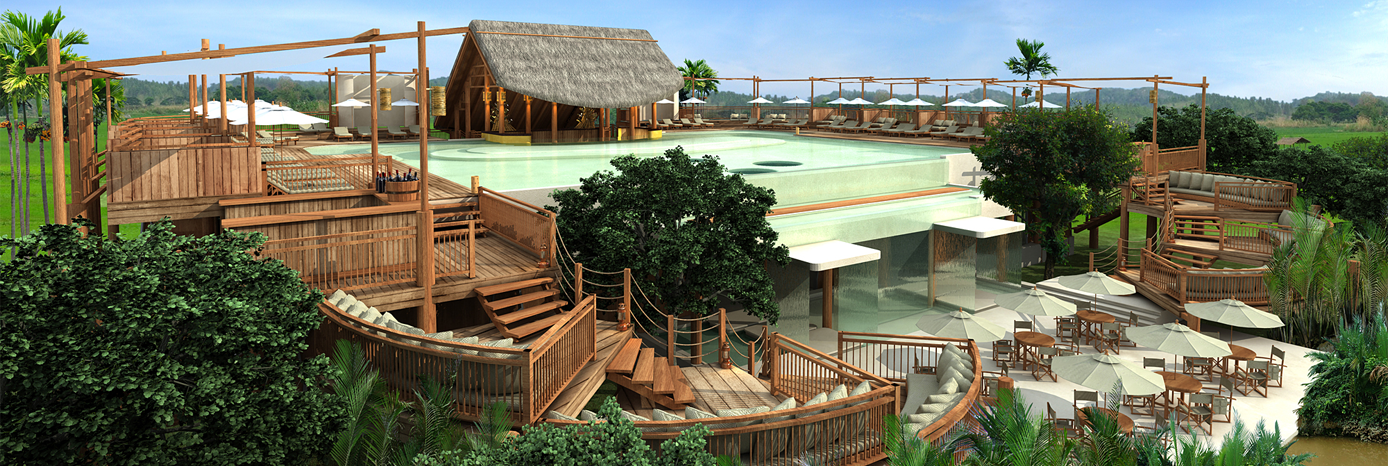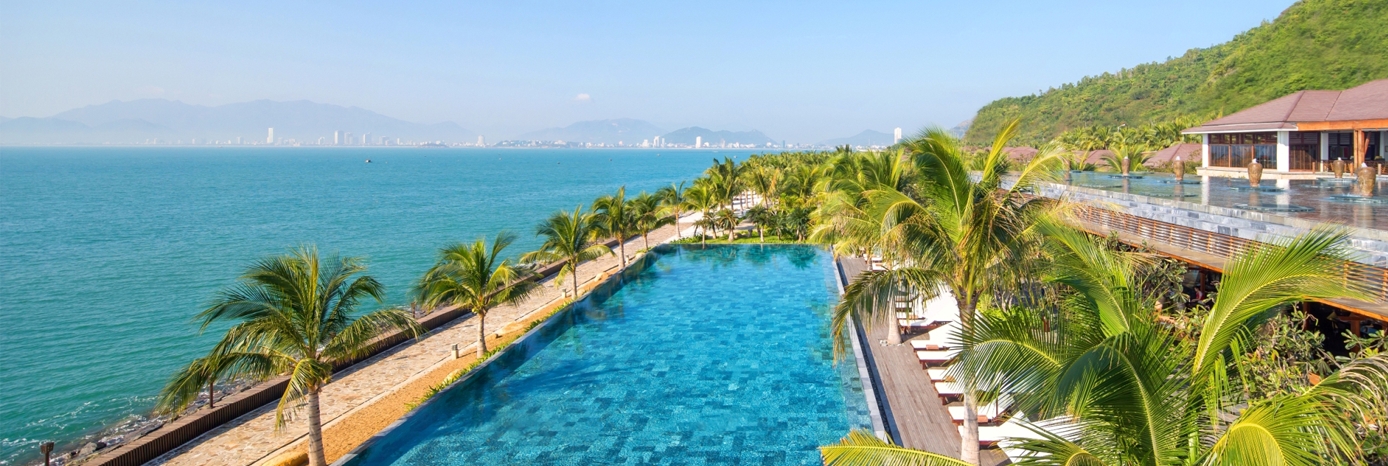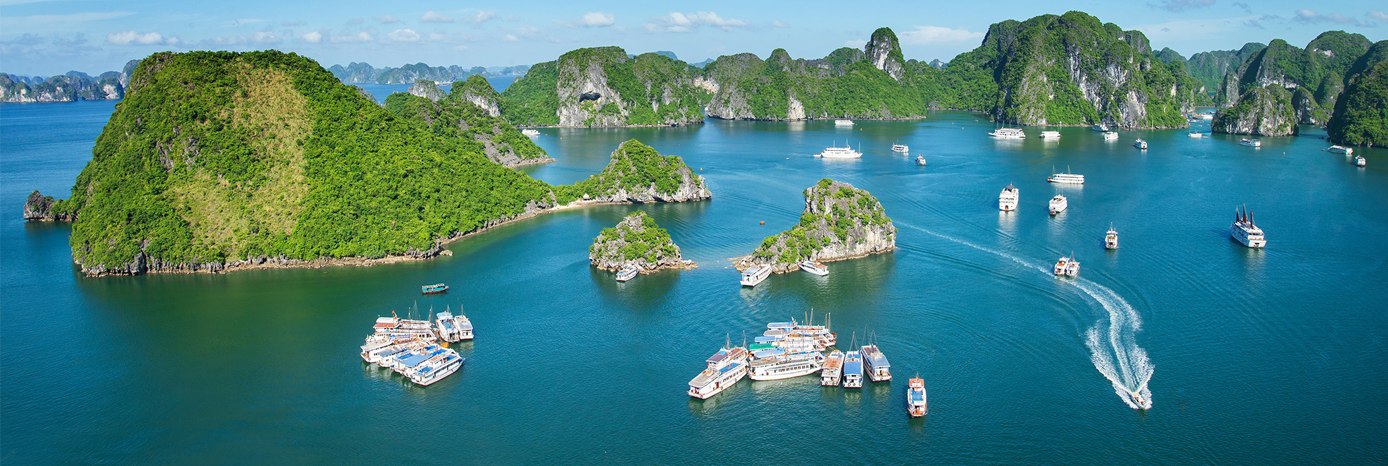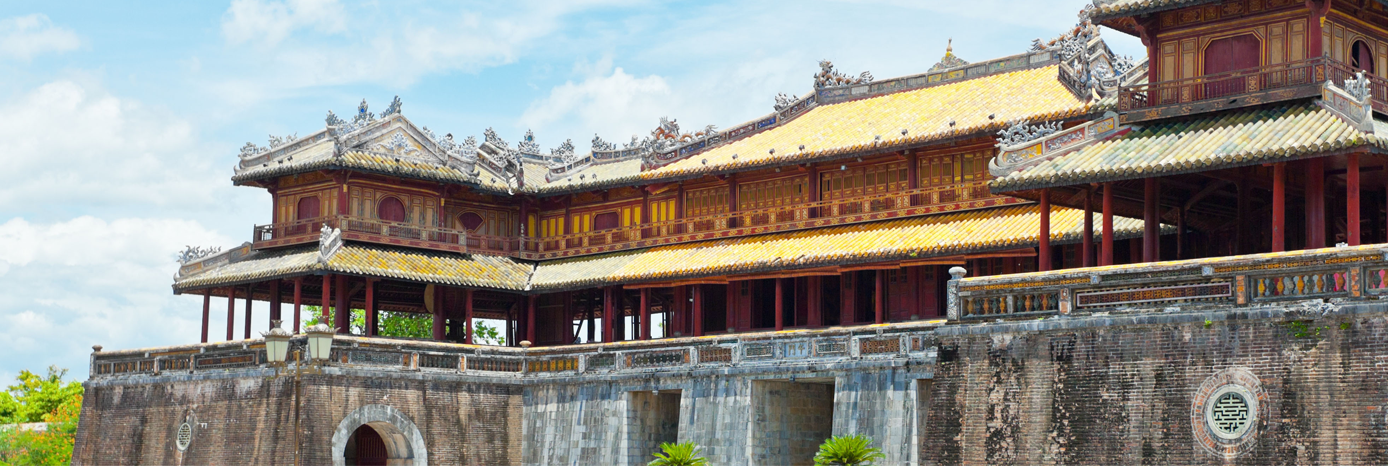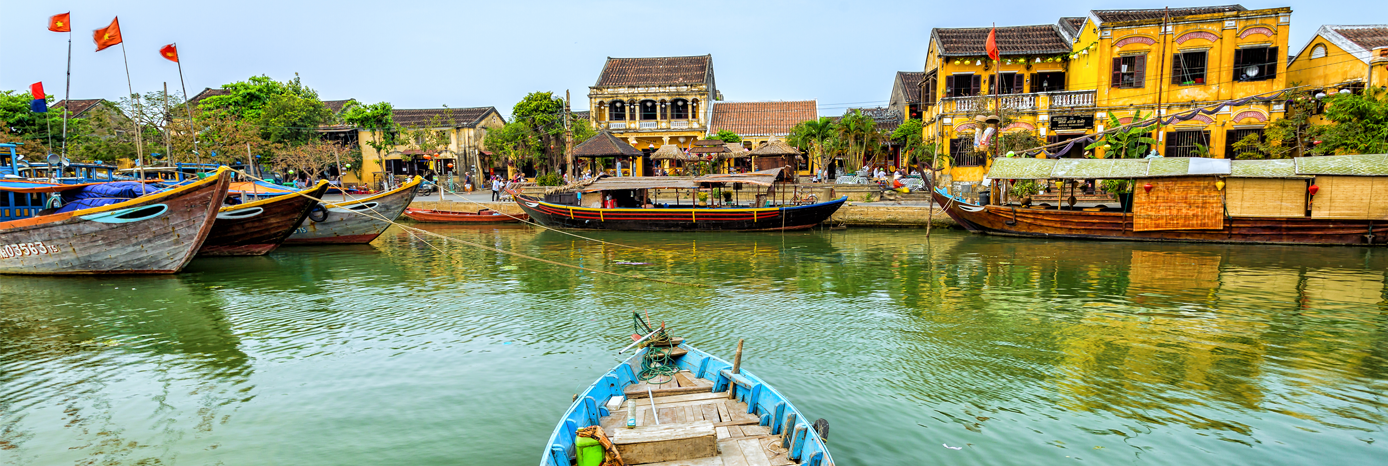Cambodia
PHNOM PENH:
The capital of the Kingdom of Cambodia is located at the confluence of three rivers: the Mekong, the Bassac, and the Tonle Sap. Once considered the loveliest city in the entire region, the city still maintains considerable charm. There is plenty to see in this small colonial capital. There are many inviting cafes lining the riverfront. In addition to famous sites like the Royal Palace, the Silver Pagoda, the National Museum, and Wat Phnom, there are several markets selling silk, silver, gems, and antiques. Also worthwhile is a visit to the notorious "Killing Fields" and Tuol Sleng Museum, which chronicle the unfortunate years under the brutal rule of the Khmer Rouge.
SIHANOUKVILLE (KOMPONG SOM): (230 KM FROM PHNOM PENH)
Cambodias only deep-sea port is located here. Considerable international aid has been spent to improve the infrastructure of the province. Although tourism has increased over the past few years, the lovely beaches of Sihanoukville are some of the most unspoilt in all of Southeast Asia. It is indeed a tropical getaway, with facilities for swimming, snorkeling, and scuba diving -- or just sun-bathing. Visitors can take boat trips to the many islands nearby, like Monkey Island. There are several hotels and local restaurants serving fresh, delicious seafood on the beach.
BATTAMBANG: (292 KM FROM PHNOM PENH)
The second largest city in Cambodia, Battambang is located on a rich and fertile plain, which provides much of the rice and other important crops for the country. The Sangker River cuts through the town centre, which is filled with colonial buildings and old shop houses. The region has numerous Angkor and post-Angkor sites, including Wat Ek and Phnom Banon, which were built in the 11th century by Suryavarman I.
THE SOUTHERN TEMPLES: (APPROXIMATELY 80 KM FROM PHNOM PENH)
A one-day excursion from Phnom Penh offers a chance to see some major archeological sites in Cambodia. Ta Phrom temple (12th century) can be found near Tonle Bati Lake and the fine Angkor temple of Suryagiri (11th century) is located on top of Phnom Chisor mountain. Other interesting stops include Angkor Borei, the first capital of the Pre-Angkor Kingdom of Chenla, Phnom Da temple (6th century), and Asram Maharosei, a unique Indian-style sandstone temple. These excursions also share the traditional Khmer way of life with visitors -- unadulterated countryside speckled with small villages and age-old handicrafts.
KAMPOT - KEP: (148 KM FROM PHNOM PENH)
Kampot is a pleasant town on the banks of the Kamchay River in southeastern Cambodia. The nearby seaside resort of Kep (formerly known as Kep-sur-Mer) is located 30 kilometres south of Kampot. Before the war, this beautiful coastal area was once the favourite holiday spot for Cambodias elite. The town is once again developing a reputation as an appealing retreat with quiet beaches and wonderful seafood. Kampot is also a base for excursions to Bokor, in the Elephant Mountains. The National Park is famous for its forests, waterfalls, and the ethereal abandoned Bokor Hill Station, where visitors can enjoy an amazing view of the Gulf of Thailand.
SIEM REAP: (314 KM FROM PHNOM PENH)
Home of Angkor Wat, one of the greatest religious monuments in the world, Siem Reap is a charming tree-lined city with a narrow river flowing through the centre of town. While most visitors spend their time exploring the ancient temple ruins, there are plenty of other places to discover. Tonle Sap Lake (and river), considered the heart of Cambodia, is located nearby; boat tours offer visitors a glimpse of the traditional Khmer way of life. Floating villages, sunset cruises, and tours of the bird reserve of Prek Tuol are other worthwhile options.
KOMPONG THOM: (168 KM FROM PHNOM PENH)
Kompong Thom is a small town located on the banks of the Stung Sen River. It is the base for excursions to the archaeological site of Sambor Prei Kuk. Located 35 kilometres from the city, the ancient capital of Chenla still contains 100 temples from the pre-Angkorian period (7th century) that are surrounded by lush forest.
KOMPONG CHAM: (124 KM FROM PHNOM PENH)
This lively port on the banks of the Mekong is home to beautiful colonial architecture and interesting temples (including Wat Nokhor and Wat Kohear Nokor). Outside the provincial capital, on the other side of the Mekong River, is Chhup, a rubber plantation that was first established by the French tire maker Michelin.
MONDULKIRI & RATANAKIRI: (600 KM FROM PHNOM PENH)
There are over 20 different ethnic groups -- each with their own distinct language, culture, traditions, and handicrafts -- in these two provinces. The highland people still practice a way of life unburdened by the modern world. The elephants, tigers, and various birds living in the jungle are protected from hunting. Trekking through the forests to the waterfalls, lakes, and villages is a one-of-a-kind experience.
KRATIE: (315 KM FROM PHNOM PENH)
Kratie is a port town on the Mekong River, roughly halfway between Phnom Penh and the border with Laos. This small provincial town has good examples of colonial architecture and is home to the rare and endangered river dolphins. Travelling around Kratie provides an interesting look at rural Cambodia, with beautiful villages, lush forests, and serene monasteries.
KOH KONG (CONSERVATION CORRIDOR): (278 KM FROM PHNOM PENH)
The southern Cardamom Mountains are an exceptionally beautiful area and a biodiversity hotspot. They are one of the last remaining elephant corridors and large predator ranges in the region. The mountains host more than half of Cambodias 2,300 bird species and are home to 14 globally threatened mammal groups. Explore the inhabited islands, isolated beaches, pristine rainforest, mangrove-lined rivers, and remote waterfalls. Ecotourism is starting to open up in the Koh Kong Conservation Corridor.
CHRONOLOGY OF ANGKOR'S TEMPLES
9TH CENTURY
ROLUOS GROUP (Hariharalaya) Hindu ** Hariharalaya was built during the 9th century and served as the capital of King Jayavarman II and, later, his son Jayavarman III. The surrounding temples of Bakhong, Preah Kho, and Lolei were built during the reign of Indravarman I and his son. Together, they represent the beginning of classical Khmer art.
9TH - 10TH CENTURY
PHNOM BAKHENG (893) ** Yacovarman I, son of Indravarman I, built his capital, Yacodharapura, around the hill of Phnom Bakheng. These were the first mountain temples built in the vicinity of Angkor. PRASAT KRAVAN (921) Hindu (Vishnu) * Built during the reign of Hashavarman I, it is composed of five brick towers. Two of them are decorated with bas-reliefs, representing Vishnu and Lakshmi, cut into bricks on the interior walls. BARAY ORIENTAL & MEBON ORIENTAL (952) Hindu (Shiva) ** Yacovarman I also built the Baray Oriental reservoir. Measuring 7000 by 1800 metres, the water was diverted from the Siem Reap River. Rajendravarman erected the Mebon Oriental. This mountain temple is guarded at its base by harnessed stone elephants. PRE RUP (961) Hindu (Shiva) ** This site was built by Rajendravarman nine years after the construction of Mebon Oriental. Composed of laterite and bricks, it is similar in style to Mebon, though much grander. PHIMEANAKAS Hindu (Shiva) ** This small mountain temple lies in the middle of the Royal Enclosure. Its name means "Celestial Palace." Rajendravarman built the pyramid, and its gallery was later added by Suryavarman I. BANTEAY SREI (967) Hindu (Shiva) **** Built under Jayavarman V, Banteay Srei is regarded as the jewel in the crown of classical Khmer art. Its rose-colored sandstone walls are decorated with carvings and bas-relief, which are among the most accomplished art that Angkor has to offer.
11TH CENTURY
TAKEO Hindu (Shiva) ** Built by Jayavarman V, this mountain temple takes the form of an imposing five-tier pyramid. Takeo was one of the 1st Angkor monuments built entirely in sandstone, but it does not have any decorative carvings because construction was never finished. BAPHUON (1060) Hindu (Shiva) ** Built by Udayadityavarman II, it was the city centre prior to the construction of Angkor Thom. The wall on the second level of the western side was fashioned into a 40 metre-long reclining Buddha. KBAL SPEAN "The Thousand Linga River" Hindu (Vishnu) ** Built by hermits, Kbal Spean is about 30 kilometres northeast of the Bayon and about 9 kilometres beyond Banteay Srei. Commonly referred to in English as "the River of a Thousand Lingas," this is a peaceful area with numerous sandstone carvings in the riverbed. There are several images of Rama, Lakshmi, and Hanuman, as well as a large image of Vishnu. Over 1,000 lingas were carved into the sandstone centuries ago. Together they form a perfect grid pattern.
12TH CENTURY
ANGKOR WAT (1110 - 1150) Hindu (Vishnu) **** Suryavarman II dedicated this temple to Vishnu and this explains its unusual westward orientation. It is the most famous temple of Angkor. Its design replicates the spatial universe in miniature, with Mount Meru surrounded by the continents and oceans. It features an 800-metre long series of extraordinary bas-reliefs, depicting epic events of Khmer history and mythology. BENG MEALEA Buddhist **** Located about 40 kilometres east of Bayon and about 7 kilometres southeast of Phnom Kulen, Beng Mealea was built around the same time as Angkor Wat. Its dimensions are similar, but Beng Mealea has no central pyramid and is enclosed by a large moat. Most of the Buddhist temples built under Jayavarman VII (Preah Khan, Banteay Kdei, Ta Som and Ta Prohm) were modeled after this complex. BANTEAY SAMRE Hindu (Vishnu) *** Built by Suryavarman II, it contains well-preserved bas-reliefs depicting scenes from Hindu legends of Vishnu and Krishna. The Samre were a people of mixed origins who were said to live at the base of the Kulen hills. TA PROHM (1186) Buddhist **** Jayavarman VII dedicated this temple to his mother. It has been left to the all-devouring jungle and it appears just as it did when it was discovered by French explorers in the 18th century. It is a temple of towers, courtyards, and narrow corridors, which are often impassable because of the wild growth of large trees and plans. The temple is like something out of an Indiana Jones movie. BANTEAY KDEI (1181) Buddhist ** Jayavarman VII also built this massive temple that is surrounded by four concentric walls. Garudas decorate its four entrances. The inside of the central tower was never finished. SRAH SRANG * Located opposite the Banteay Kdei complex, this artificial lake was used for ritual bathing by Royals. PREAH KHAN (1191) Buddhist **** Named "Sacred Sword," this temple was built by Jayavarman VII and dedicated to his father. It covers a very large area -- 700 by 800 metres -- and is surrounded by a moat. Elaborate lintels and panels are richly decorated with bas-reliefs depicting Buddhist motifs and Hindu epics. NEAK PEAN Buddhist ** This temple is defined by its large square pool and four smaller square pools arranged on each axis. In the center of the main pool, a circular island is protected by two nagas. It was built by Jayavarman VII and used for rites of ritual purification. BAYON Buddhist **** Built by Jayavarman VII in the exact center of Angkor Thom, it is unique for its 54 towers decorated with over 200 smiling faces of Avalokiteshvara. Its well-preserved bas-reliefs depict everyday life in the 12th century. ELEPHANTS TERRACE *** Measuring 350 metres in width, carvings of elephants in hunting scenes, garudas, and lions emboss the temple. Built under Jayavarman VII, it was a viewing platform from which kings and their courts watched military displays of pomp and pageantry. TERRACE OF THE LEPER KING *** At the top of this 7-metre-high platform stands a statue of what was thought to be the Leper King. It is in fact Yama, the god and judge of the dead. Stunning carvings adorning both side of the walls cover the walkway. It was also built under Jayavarman VII. BANTEAY CHHMAR Buddhist *** At the conclusion of the civil war between the Khmer and Champa kingdoms in the 12th century, King Jayavarman VII built a temple in the Cambodian jungle to honor five heroes who died in defense of their country, one of them being his son. A"Fine Citadel" of eight temples, situated on a nine-square kilometre site and surrounded by a moat, was distinguished by expertly rendered bas-reliefs depicting the war between the kingdoms and the accession of the Khmer king. This remote ruined temple, with massive face-towers and intricate carvings shrouded in mist and swallowed by the jungle, conjures up all the romanticism of a lost Khmer city.








